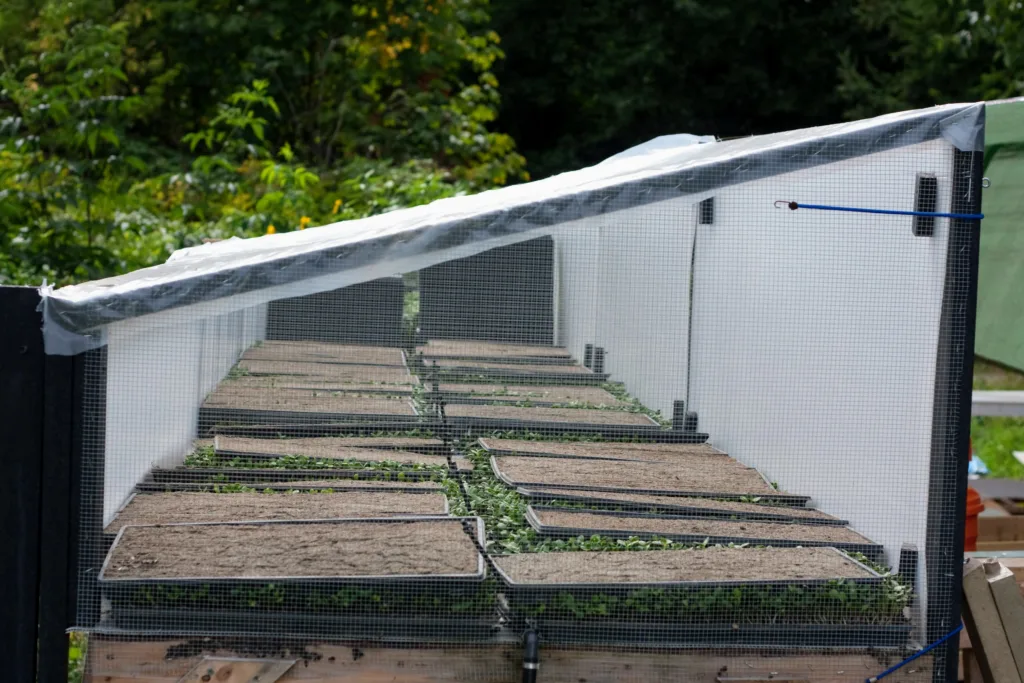
Covered Benches: An Accessible, Expandable Outdoor Microgreens Growing Space
Introduction to Microgreens Growing Benches
Microgreens growing benches are one of the simplest and most effective ways to begin producing microgreens, particularly in milder climates. They represent a low-barrier, semi-outdoor infrastructure option that provides a surprising amount of flexibility. Originally developed out of necessity for low-cost infrastructure that could be rapidly deployed and adapted, the covered bench system has proven itself repeatedly in both prototype and mature operations.
At their core, covered benches are just that — benches built to hold trays, covered with a protective structure that offers basic environmental control. These systems are typically constructed from common building materials such as wood, synthetic lumber, and plastic panels. While they may not have the precision climate control of a greenhouse, they provide sufficient protection from wind, rain, and sun to support consistent crop production during the warmer months.
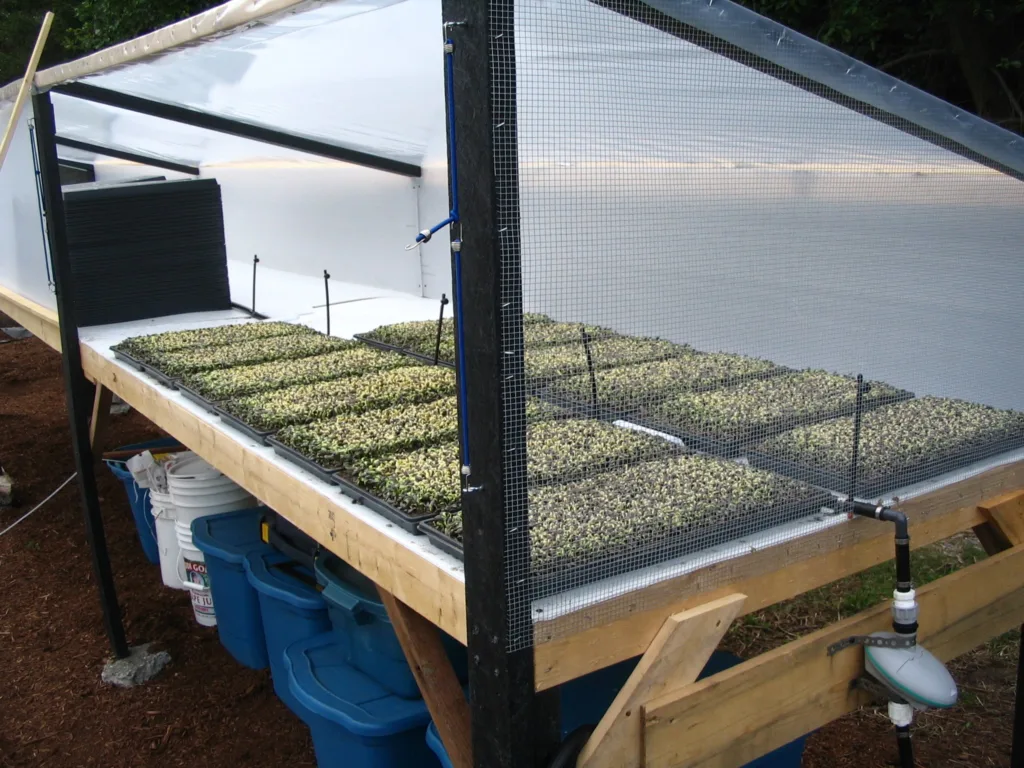
Benefits of Microgreens Growing Benches
There are several key advantages to this type of setup. First, covered benches are quick and inexpensive to build. A basic section can be constructed in just a few hours using modular components: platforms for holding trays and upright braces that support a roof and walls. This modularity allows you to expand incrementally, adding new sections as needed with relatively little effort. It’s a perfect fit for growers who want to scale production gradually while minimizing up-front investment.
Another major benefit is that you typically don’t need a building permit to install a covered bench system. Since it’s not a permanent structure, this keeps you agile, compliant, and flexible. These benches are especially well-suited for leased land or community-based projects where permanent infrastructure may not be an option. And if you need to relocate, they’re simple to disassemble and reassemble.

Microgreens Growing Bench Design
From a design perspective, there are many small but important features that can elevate the performance of a covered bench system. The use of mesh on the sides and ends allows for passive airflow, which is crucial for preventing mold and damping-off. Adding mesh doors that swing up on hinges makes it easy to access your trays while still protecting them from pests.

The top can be covered with 6-mil plastic to shed rain, and using Coroplast or polycarbonate panels on the back adds structure and helps retain heat. A key consideration here is pest control: adding quarter-inch hardware cloth to the ends and around the base helps keep out rodents, which are attracted to high-protein seeds and can devastate a crop.
Microgreens Growing Bench Hygiene
Hygiene is another area where thoughtful design makes a difference. Using synthetic lumber for legs and supports reduces rot and microbial buildup, while covering wooden bench tops with Coroplast or stainless steel helps maintain a sanitary work surface. Even though it’s a relatively simple system, you should always keep food safety in mind when selecting materials.
Microgreens Growing Bench Climate Control
Climate control is limited in a bench system, but not absent. In climates like Vancouver, BC, this type of infrastructure allows for reliable production from mid-April to mid-September, and possibly earlier or later with a bit of supplementary heat. A small space heater can be surprisingly effective if the bench is well-sealed. Since heat rises, placing the heater below the trays warms the root zone and creates a favorable microclimate even if ambient air remains cooler.
Microgreens Growing Bench Irrigation
Irrigation can be automated with basic components: a timer, some tubing, and micro-spray emitters. This reduces labor significantly and ensures consistent watering. In high-production systems, automation can mean the difference between sustainable scaling and constant catch-up.
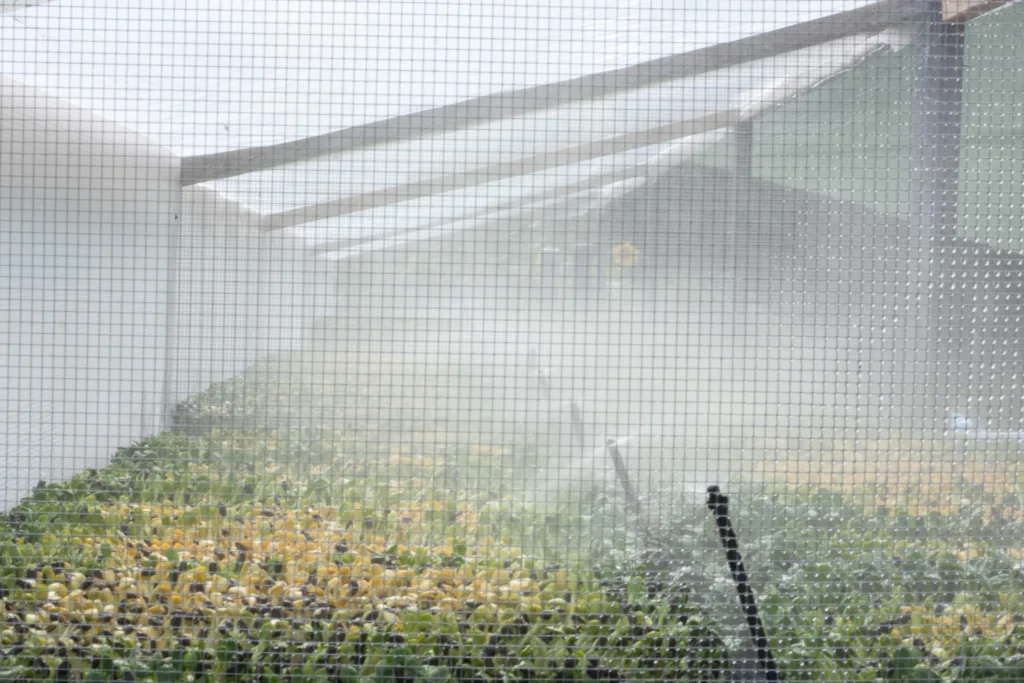
Utilizing Vertical Space in a Microgreens Growing Bench
Covered benches are also ideal for integrating vertical elements into your system. You can add a lower tier to store or finish crops like wheatgrass that need shade before harvest. You could also use this tier as a germination space. Although this bottom area won’t support full crop growth due to limited light, it’s a functional use of what would otherwise be wasted space.
Microgreens Growing Benches – In Closing
Covered benches are not a permanent solution for every grower, but they are an exceptional starting point. They enable you to begin production, test your market, generate revenue, and refine your system before making more significant infrastructure investments. If you’re starting with limited space, budget, or commitment — but you want a system that’s clean, productive, and expandable — covered benches are one of your best options.
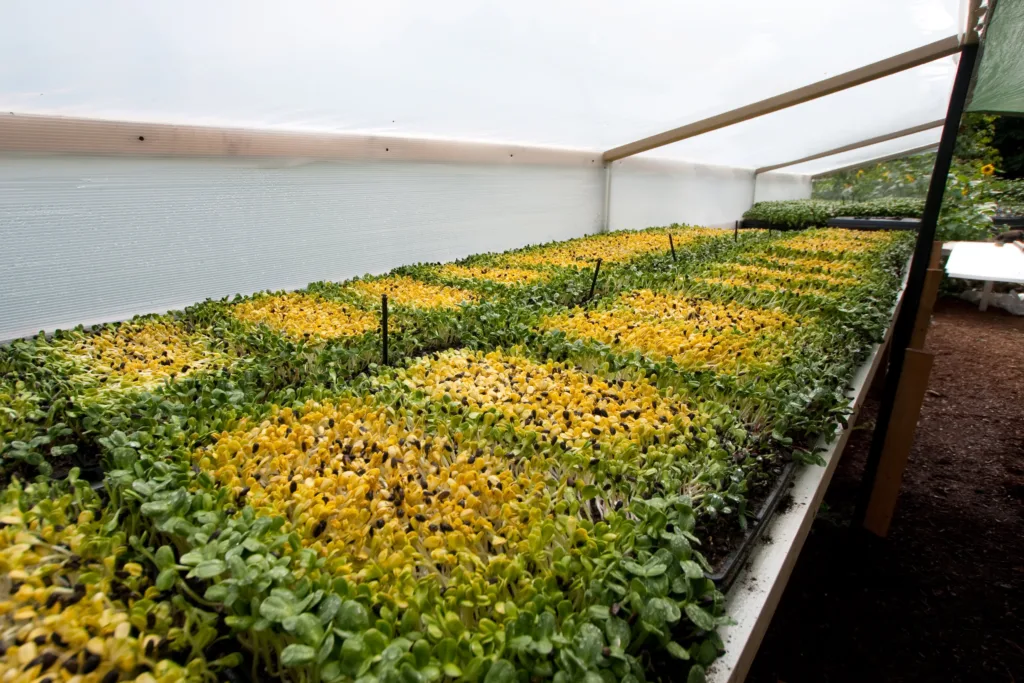
In the next sections, we’ll shift from the backyard to the basement as we explore indoor growing environments, and what it takes to run a microgreens system inside your home or garage.
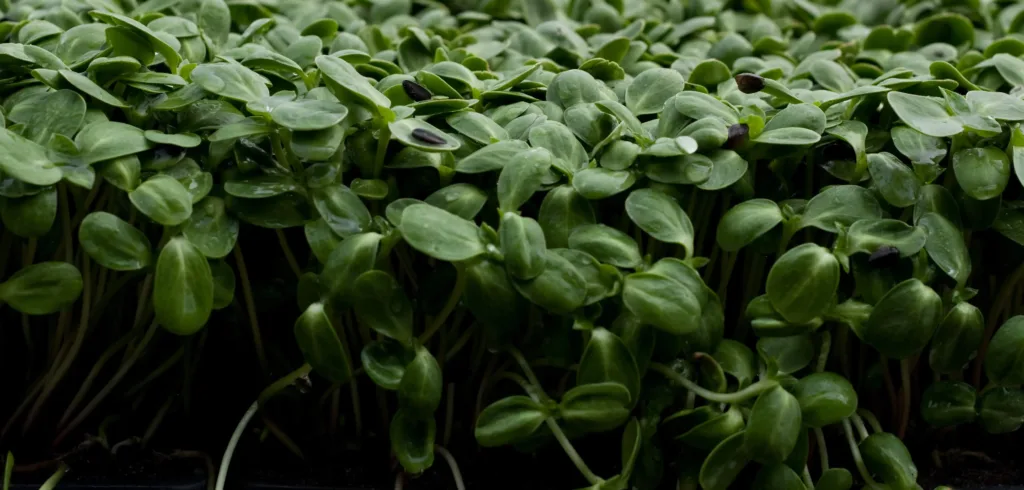
Leave a Reply